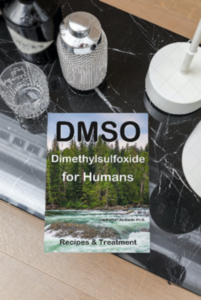DMSO has a long history in pharmaceutical, industrial, and homeopathic use and is now well-established in topical medical formulations as a penetration enhancer. According to DMSO for Humans author Herb Roi Richards, dimethyl sulfoxide is an effective and safe means of delivering healing and biologically supportive substances precisely via transdermal application and without injection. Let’s take a look at the many safe uses of DMSO:
Industrial Use of DMSO
DMSO is used as an industrial solvent with years of excellent results and can be found in the following products:
- Herbicides
- Fungicides
- Antibiotics
- Plant hormones
Among others are manufactured using DMSO as an industrial solvent.
Medical Use of DMSO
As prescription medicine, DMSO is taken orally, applied to the skin (topically), or injected into the veins (intravenously or IV).
DMSO has been used in medicine since 1963, when a team at Oregon Health & Science University Medical School, led by Stanley Jacob, discovered that it penetrated the skin and other membranes without damaging them and could carry other compounds into a biological system. As a topical analgesic, an anti-inflammatory, an antioxidant, and a vehicle for the application of pharmaceuticals, DMSO is mainly used in medicine.
DMSO is an FDA-approved product for treating a bladder condition called interstitial cystitis. DMSO is used to wash the bladder to relieve symptoms such as pain.
Intravenously, DMSO is given to treat abnormally high blood pressure in the brain. In addition, it is given intravenously to treat bladder infections (interstitial cystitis) and chronic inflammatory bladder disease. In order to treat chronic inflammatory bladder disease symptoms, certain DMSO products have been approved by the Food and Drug Administration. To treat bile duct stones, DMSO is sometimes combined with other medications in the bile ducts.
Medical Mixing of DMSO
Some transdermal drug delivery systems use DMSO because it increases the absorption rate of some compounds through biological tissues, including skin.
As a result of DMSO, medicines can pass through protective layers of the skin and affect proteins, carbohydrates, fats, and water in the body.
When combined with antifungal medications, DMSO penetrates not only the skin, but also toenails and fingernails.
DMSO in Sports Medicine
In sports medicine, DMSO is used as a performance enhancer for:
- The anti-inflammatory properties of DMSO may reduce muscle soreness and speed recovery after exercise.
- Due to DMSO’s ability to carry substances through the skin and cell membranes, it is believed to improve blood flow, resulting in better oxygen and nutrient delivery to the muscles.
- Improved flexibility: DMSO is also said to relax muscles, which could improve flexibility and range of motion.
DMSO as Holistic Medicine
As part of regular healthcare and maintenance, DMSO is used in many ways, including:
- When essential oils are mixed with DMSO, they can penetrate the blood-brain barrier and penetrate deeper into your cells.
- The liver is detoxified by a mixture of Castor Oil and DMSO.
- Many eye diseases such as cataracts can be improved with an eye spray containing 20% DMSO and 80% distilled water.
- As an antimicrobial, antiviral, and antifungal, DMSO is used to treat toe fungus, athlete’s foot, acne, and other skin conditions.
- It is possible to regenerate hair growth with DMSO.
- Reverses stroke damage.
- Bruising and scarring are eliminated.
- You can improve your overall health by taking a teaspoon of DMSO daily.
- Rejuvenation of youthful skin (when combined with Vitamin C)
- With a 50% solution of distilled water, DMSO stops migraines in their tracks.
Mixing DMSO for Home Use, Folk Medicine, or Natural Alternative Specialists
Since the release of Dimethylsulfoxide DMSO for Humans, Recipes, and Treatment, DMSO is increasingly found in medicine cabinets and emergency kits for in-home healing and health maintenance.
In the home, DMSO is used topically to relieve pain and speed wound, burn, and muscle and skeletal healing.
Topically, DMSO is also used to treat headaches, inflammation, osteoarthritis, rheumatoid arthritis, and severe facial pain called tic douloureux.
Among its uses are treatment of eye conditions such as cataracts, glaucoma, and retinal problems; foot conditions such as bunions, calluses, and fungus on toenails; and skin conditions such as keloid scarring and scleroderma.
How to Mix DMSO with Other Ingredients and Administer for Extraordinary Results
As per DMSO specialist Herb Roi Richards, combining this ingredient with others at home has shown great potential and produced remarkable outcomes. Despite the FDA’s fear-inducing tactics and pharmaceutical companies’ attempts to suppress information, using DMSO at home is entirely safe when combined with other known beneficial ingredients. As a result, many households are confidently experimenting with it.
For example, if there is a known herbal ingredient (essential oil, mineral, vitamin, etc.) that has a positive impact on a member of the family who is experiencing a health challenge, mixing the herbal ingredient with DMSO could exponentially increase the efficacy of the herbal ingredient.
Richards recommends mixing pharmaceutical grade (99.99%) DMSO with the ingredient you wish to experiment with to get the best results. However, you should do your research and consult your doctor first.
Rub the Mixture Into the Target Area of the Skin
As a potential home user, DMSO has perhaps the most exciting application. Just like the pharmaceutical companies and doctors combine DMSO with other medicines for transdermal delivery (mix and smear on the skin to treat a specific area), the average person can mix their favorite natural ingredients with DMSO and rub it into the area they might like to treat.
Richards claims that this method is just as accurate as injecting the mixture into the target area, but you simply rub it into the targeted surface area of the skin (plus an additional five inches around), and DMSO takes it through the protective area of the skin, where it finds water and hitches a ride with blood cells already traveling to the affected area.
Turning Your Home into An Experimental Lab
Those with the willingness to experiment on themselves and tweak their recipes until they work to their satisfaction are the true “Winners” according to Herb Roi Richards, author of DMSO for Humans. It takes courage and initiative to break the seventy-five-plus years of programming by pharmaceutical companies that have the government, educational system, and manipulative media at their beck and call.
Maybe the time is coming for individuals and families to take the initiative to take responsibility for their own in-home healthcare and maintenance, as much as possible, and only reach out to traditional medicine when necessary. For one to do so, it would require a good deal of conscious effort to do the research and consider any potential consequences, balancing the mixtures, reviewing the results, and making adjustments along the way. Too much of any good thing could have health consequences. (One could overdose on water with lethal consequences.) A little common sense goes a long way.
Of course, one would be wise to get a copy of the author’s book, to get the full details before proceeding, and be sure to check with your current licensed healthcare provider before experimenting with anything.
Useful Companion Products
Chapter 7 of Richards’ DMSO for Humans book contains a list of many companion products that are known to work well in combination with dimethyl sulfoxide. And each product listed also has the top ten usages for that particular ingredient.
Let’s take a look at one of the companion products, like Silver Ion Water. For the Silver Water ingredient, the top ten uses of Silver Water from Richards’ book, look like this:
- Anti-inflammatory
- Antibacterial
- Antifungal
- Antiviral
- Immunity boost
- Improves skin disorders
- Treatment of skin ulcers and wounds
- Increases natural healing capabilities of the body
- Veterinary uses: cold, ringworm, cuts, burns, ear infections, eye conditions, etc.
- Prevents or treats diseases like the flu, pneumonia, herpes, eye infections, shingles, diabetes, cancer, and AIDS.
You can see how helpful this could be for the do-it-yourselfer who is at home and wondering what good ingredients would be to mix with DMSO for a particular DIY result.
Dosages of DMSO
In scientific research, the following doses have been studied:
In order to prevent some side effects of cancer treatment:
In most cases, 77-90% DMSO is applied every 3-8 hours for 10-14 days under medical supervision.
Shingles (herpes zoster):
DMSO containing 5-40% idoxuridine is applied every 4 hours for 4 days following the appearance of a rash.
Nerve pain:
For up to three weeks, 50% DMSO solution was applied four times daily.
Osteoarthritis:
The DMSO gel was applied three times a day, and the DMSO topical solution was applied four times a day.
Is there a risk of DMSO side effects?
The use of DMSO as a prescription medication is safe. Do not use products not prescribed by your physician.
The side effects of taking DMSO by mouth or applying it to the skin include dry skin, skin reactions, headaches, dizziness, drowsiness, nausea, vomiting, diarrhea, constipation, breathing difficulties, vision difficulties, blood problems, and allergic reactions. A garlic-like taste and body odor are also caused by DMSO.
Certain non-prescription DMSO products might be “industrial grade”, which is not intended for human use. These products might contain impurities that can cause health problems.
When handling DMSO, be aware that it readily penetrates the skin, so anything it is mixed with will be absorbed into the body.







Leave a Reply